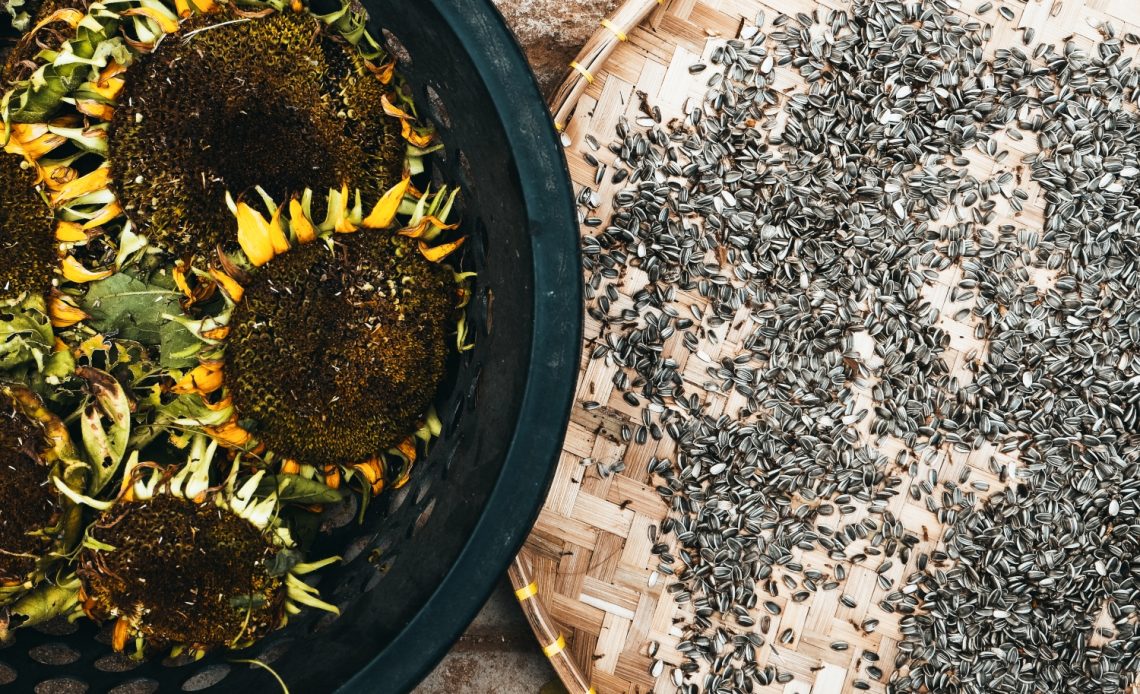

We’re here to help! Wild Yards is a completely free website that is 100% dedicated to helping you create a wildlife-friendly, sustainable yard. Read more
WildYards is reader-supported. When you buy a product through a link on our site, we may earn a comission. Every product is independently selected by our (obsessive) editors and our reviews are unbiased and objective. Read more about our mission or our privacy policy.
An easy-growing summer favorite, sunflowers are highly beneficial for a garden. These towering plants offer low-growing vegetables, like melons and squash, some much-needed shade from the afternoon sun. They also help attract pollinators so you get the best crop yield possible. These plants are so handy that even dead sunflower heads have their uses. So, just what can you do with dead sunflower heads?
Harvest the seeds from dead sunflower heads and add them to bird feeders, or roast them to create a healthy afternoon snack. Dead sunflower heads can also be added to homemade mulch or to the compost heap to enrich the soil in your garden later on.
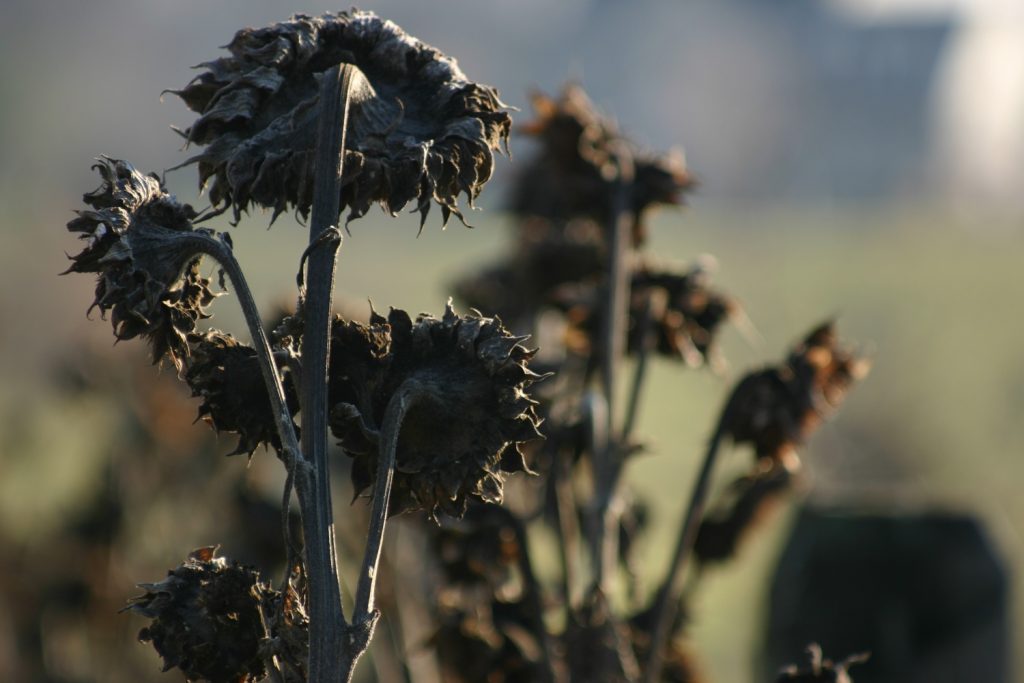
How long do sunflowers live?
Sunflowers come in annual and perennial varieties. Most sunflowers start to bloom 60 days after planting, although it can take up to 120 days for them to bloom, depending on their variety. Plants typically flower in late summer to early fall. These tall, open-face blossoms are an excellent source of protein and pollen, a real blessing for bees, who rely on quality food sources, rather than multiple food sources, to thrive.
Once a sunflower has bloomed, it stays open for around 20 days before dying. Removing the dead sunflower heads (a process called deadheading) stimulates the plant to produce new flowers. The blooming period for most sunflower cultivars is 8 to 12 weeks. Removing dead and dying flowers helps plants bloom for the longest period of time possible.
When and how should you deadhead your sunflowers?
You can begin deadheading your sunflowers as soon as the flowers begin to die. It’s best to remove dead sunflowers whenever you see them, as opposed to waiting until the end of the season and pruning them back all at once. Regularly deadheading your sunflowers encourages the plants to continue to produce new blooms. Here are some signs that a sunflower is ready to be removed:
- The flower has lost at least 60% of its petals
- The flower head is drooping and causing the plant to sag
- The flower is losing its vibrant coloring
- Pollinators are no longer visiting the flower head
- The stem that the flower head is attached to is drying up
To remove dead sunflower heads, use a sharp pair of scissors or garden shears to snip the stems 6 to 8 inches below the flower. Hold the flower stem with one hand, and trim them off with the other. Just be careful not to get your fingers caught in the blades.
You should remove any obviously dead sunflower heads. But you can also remove flowers that are dying. This allows the plant to retain energy, which it can then use to produce new blooms. However, deadheading dying flower heads means the plant won’t be able to produce seeds for that particular flower, so keep this in mind when pruning.
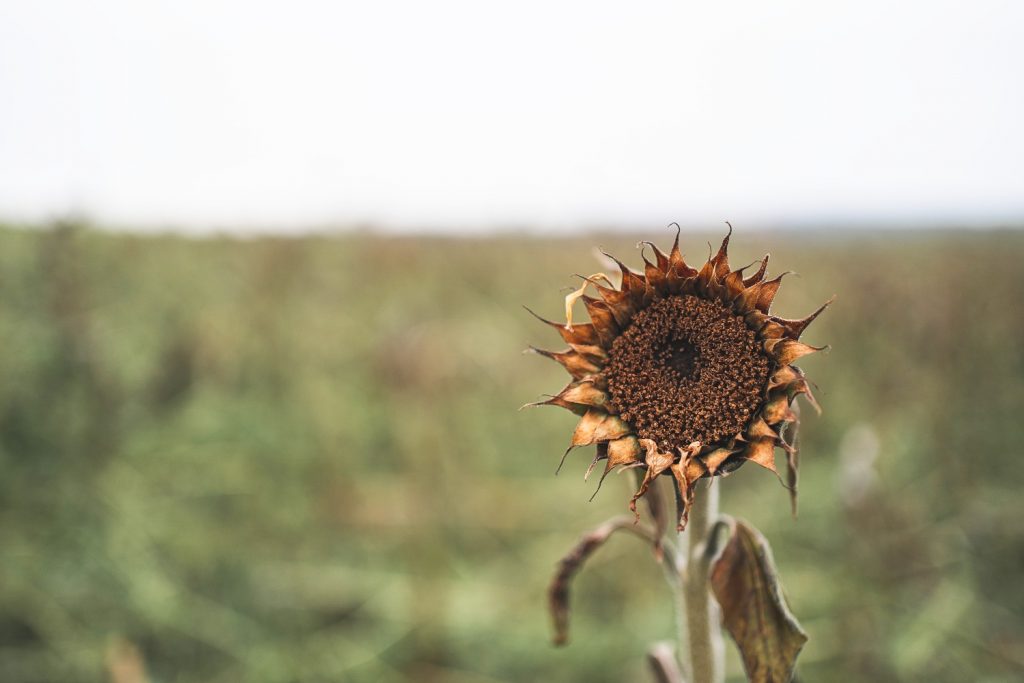
What can you do with dead sunflower heads?
Sunflowers are beneficial for your garden from start to finish. And as it turns out, sunflower heads have their uses. So, before you toss those dead sunflower heads in the garbage, take a look at the many ways you can repurpose them.
Roast the seeds
If your dead sunflowers have gone to seed, harvest them, roast them, and save them for a savory snack. Sunflower seeds are an excellent source of vitamins E and B6, as well as minerals selenium and manganese. Furthermore, the linoleic acids found in sunflower seeds have been found to improve heart health, thereby reducing the risk of coronary artery disease.
To harvest the seeds from dead sunflowers, simply set the flower head on a counter or tabletop and rub the flower in a circular motion. You may need to peel a few seeds off with your fingertips. Scrape the seeds into a colander and rinse them off in cold water, being sure to remove any sunflower leaves, stems, or other debris.
Next, add the seeds to a medium-sized saucepan, cover them with an inch of water, stir in a pinch of salt, and allow them to simmer for 15 minutes. When they’re done, drain the water, and spread the seeds evenly onto a baking sheet lined with parchment paper. Roast them in the oven at 400 degrees Fahrenheit for 10 to 15 minutes, salt them to taste, and enjoy!
Add the seeds to bird feeders
If roasting sunflower seeds sounds like too much work, or if you just don’t like sunflower seeds, you can still harvest them for your neighborhood birds, instead. There’s no need to wash the sunflower seeds or prepare them in any way. Simply remove them from the dead sunflower heads and add them to your bird feeders. You can also set them in a separate feeder or dish, so birds don’t waste their other bird seed while trying to pick out the sunflower seeds.
Sunflower seeds aren’t just a healthy snack for people. They’re good for birds, too! Many birds are known to enjoy nibbling on sunflower seeds, including blue jays, woodpeckers, cardinals, tufted titmice, chickadees, goldfinches, and nuthatches. In fact, it seems the only birds who don’t enjoy sunflower seeds are hummingbirds. Like butterflies, hummingbirds would much rather have the flower’s nectar, instead.
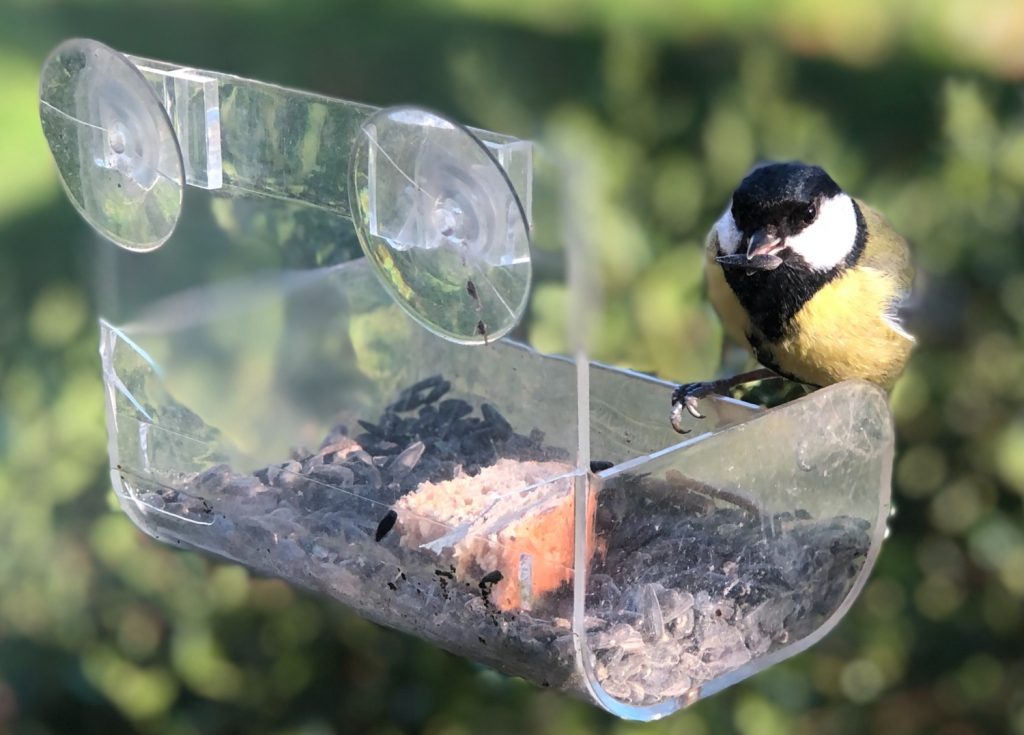
Hang up dead sunflower heads for squirrels to enjoy
Birds love sunflower seeds, but they’re not the only ones. Squirrels enjoy snacking on them, too. Sunflower seeds are rich in fats and proteins that squirrels need to prepare for winter. While squirrels are more than happy to steal sunflower seeds from your bird feeders, they also enjoy prying the sunflower seeds directly from the flower heads.
Stick sunflower heads on a fruit feeder spike, or simply set them on the ground near your bird feeder where your neighborhood squirrels are sure to find them. Leaving the seeds in the sunflower encourages the squirrel’s natural foraging instinct, and helps keep them busy. Just be sure to remove any owl boxes from the area ahead of time, so the squirrels don’t become your resident owl’s next meal!
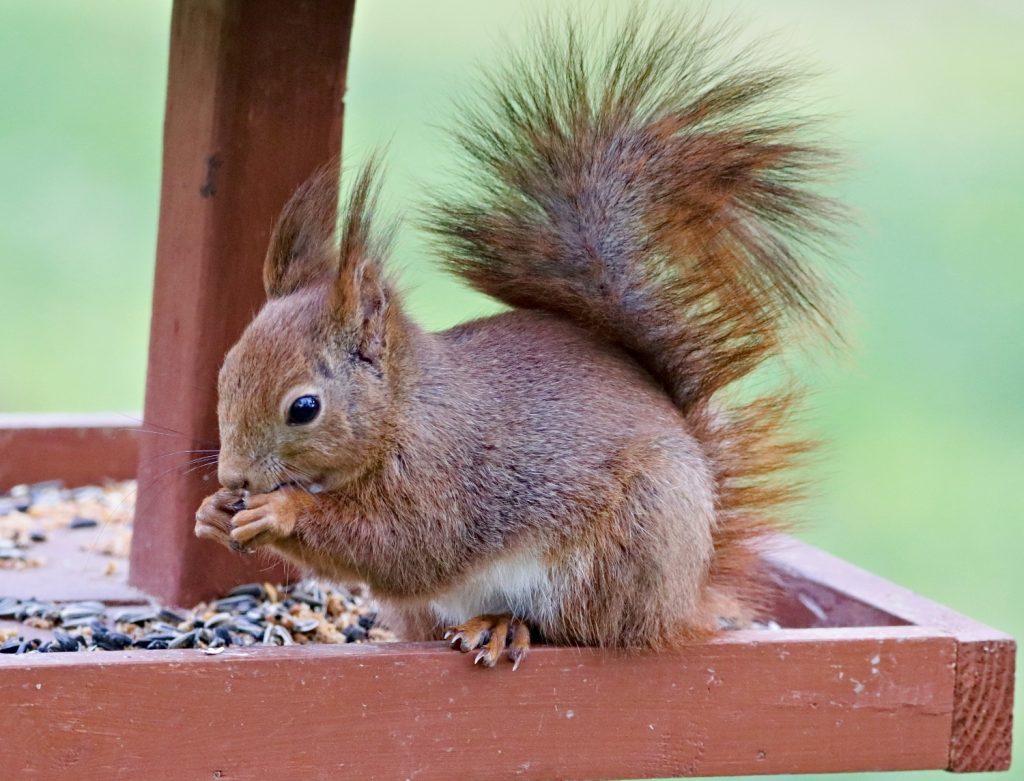
Save the seeds for next year
You can also save the seeds from your dead sunflower heads to start new seedlings next year. To do this, simply harvest the flower heads and set them on a newspaper to dry out. Once the sunflowers have dehydrated, the seeds should be easier to collect. Next, spread the seeds into a single layer on an old tray or baking sheet to dry even more. Leave the tray in a warm area where birds and rodents won’t be able to get to them.
Once the seeds have dried properly, gather them into a brown paper bag and store them in a cool, dry place. When you’re ready to start a new crop of sunflowers the next year, your seeds will be good to go! When harvesting sunflower seeds to save for a new crop, always harvest seeds from the strongest, healthiest plant.
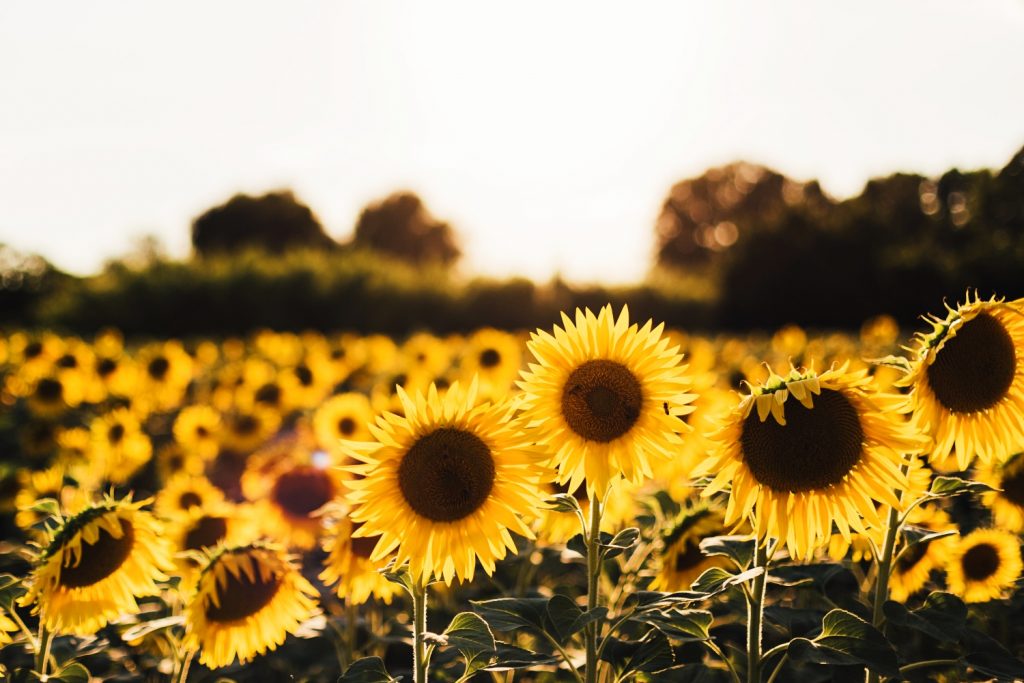
Toss dead sunflower heads in with mulch
If you’re looking for a quick and easy way to dispose of your dead sunflower heads, toss them into the mulch in your flower beds. You can use a weed fork to work them gently into the mix. The flower heads will break down over time, providing the ornamentals in your landscaping with a steady dose of nutrients.
If you intend to add dead sunflower heads to your mulch, then it’s best to remove the flower heads before they go to seed. This way, you won’t have a bunch of sunflower seedlings sprouting up in your flower beds. Alternatively, you can allow the sunflower heads to dry up, remove the seeds for the birds, and then add the flower heads to your mulch so you don’t have to worry about weeding later on.
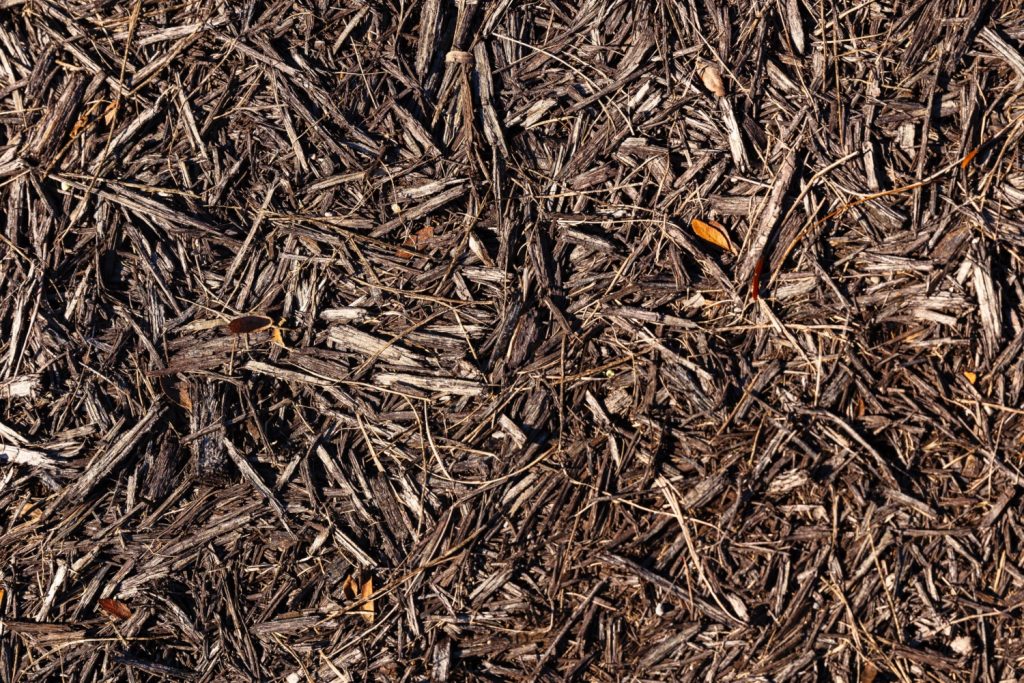
Include them in homemade compost
Piggybacking off of the last option, you can also add dead sunflower heads to your compost heap. Ideally, compost should be a 1:1 ratio of brown materials and green materials. The former category includes egg cartons, cardboard boxes, shredded paper, and dead leaves, while the latter group is comprised of fresh lawn clippings, vegetable peels, pruned plant foliage, and flower heads.
Over time, these organic materials break down, creating a nutritious all-natural fertilizer that the plants in your garden are sure to enjoy. Like manure, compost is an excellent source of nitrogen, which supports healthy, lush, green foliage. Use your homemade compost to feed fruits, vegetables, and flowers whenever they need a perk-me-up.
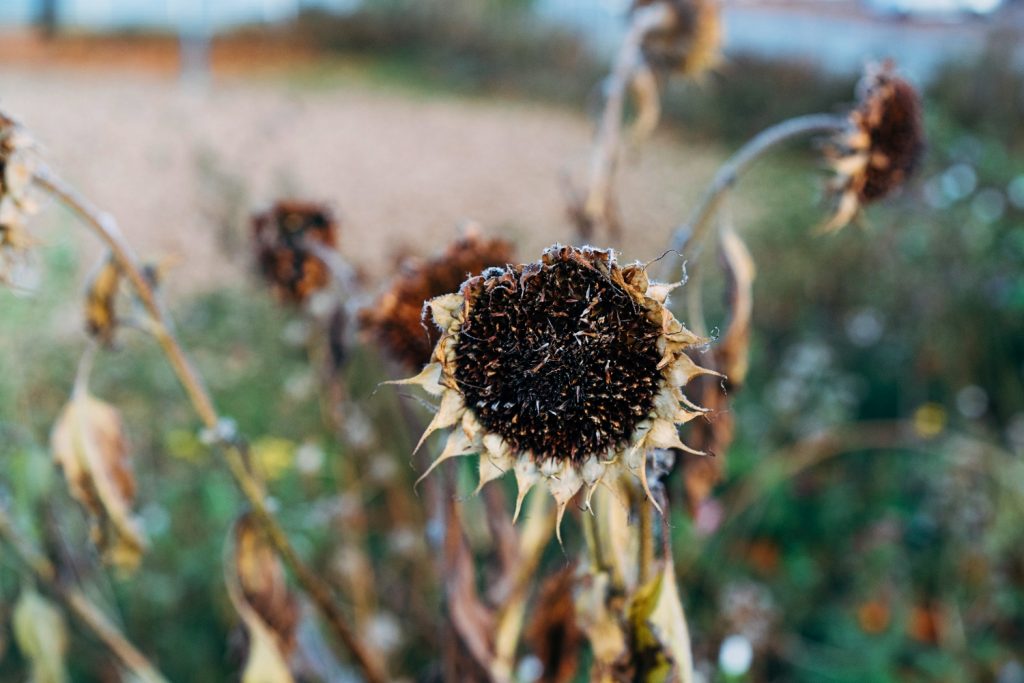
Make dried flower arrangements and potpourris
Dried sunflowers are just gorgeous, and they fit right in with fall decor. Consider upcycling pruned sunflower heads to use in dried flower arrangements to get your home ready for autumn. Dead sunflower heads also work well in homemade potpourris. Remove the stems and mix the dead flower heads in with rose petals, orange peels, and eucalyptus leaves and display the assortment in a decorative dish.
Dead sunflowers don’t have much of a smell. But they are quite porous, so they make a good vessel for essential oils. Add a few drops of cinnamon, orange, sage, or nutmeg essential oils to create a tantalizing autumn fragrance for your home.
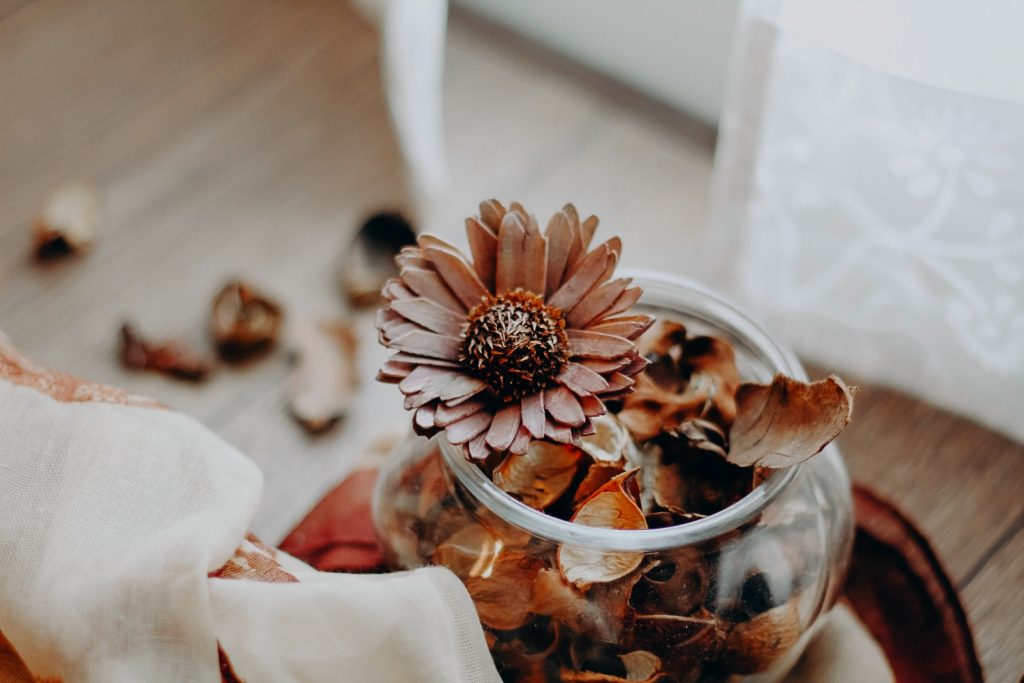
How should you deal with dying sunflower plants?
If the sunflowers in your garden are annuals, then once the sunflowers have finished blooming for the season, there’s really no reason to keep the plants in the ground. Dead sunflowers take up valuable space in a garden — space that could be used to plant winter vegetables or even decorative plants, like gladiolus.
Uprooting dying sunflowers frees up the space for more crops. The old plants can be tilled under into the soil, where they’ll provide vitamins and minerals to the plants that take their place. They can also be cut into smaller pieces with garden shears and added to compost.
If you don’t have a compost heap, and if you’re gardening in raised beds that make it difficult to amend the soil with such tall plants, then simply gather the old sunflower stalks and burn them, or toss them into the garbage to be hauled away.
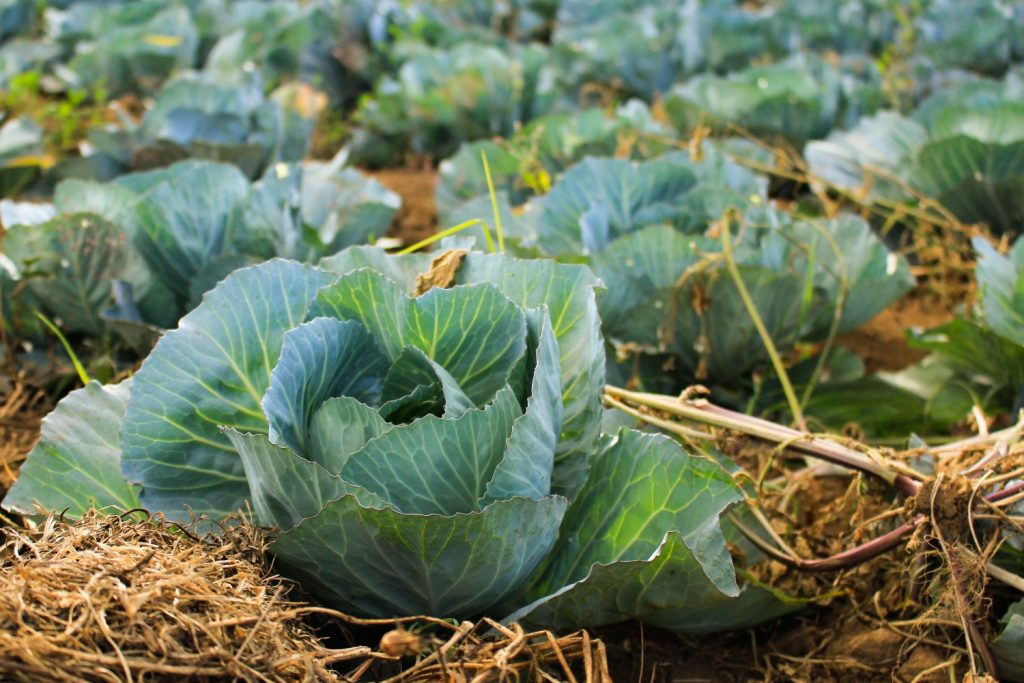
Do sunflowers have to be deadheaded?
No, absolutely not! Like morning glories, sunflowers are beloved for their cheery appearance and easy-growing nature. All you really have to do is plant the seeds in your garden, water them regularly, and leave them to their own devices. Whether you’re growing sunflowers to feed the local wildlife, or simply because you want a low-maintenance annual to spruce up your garden, these plants will thrive, even if you never deadhead them
That said, sunflower plants do benefit from regular deadheading. And, as you can see, there are plenty of things you can do with the dead sunflower heads to make it well worth harvesting them. So before you uproot your dying sunflowers for the season, consider harvesting the flowers first.
